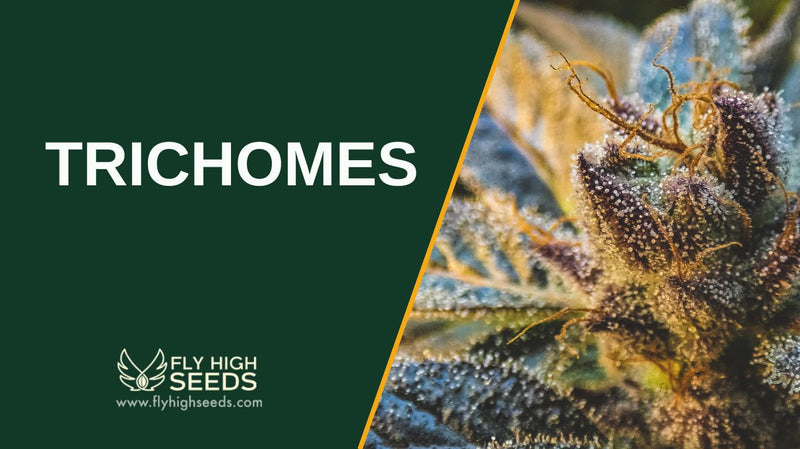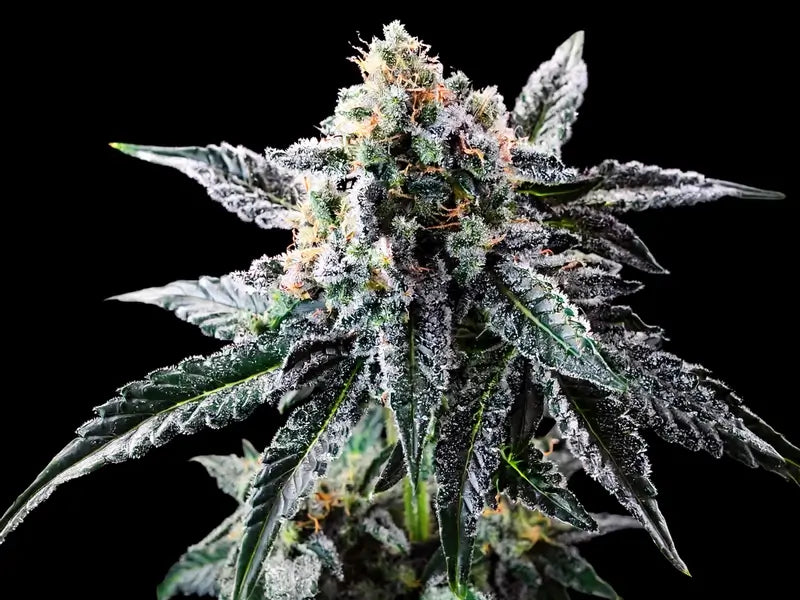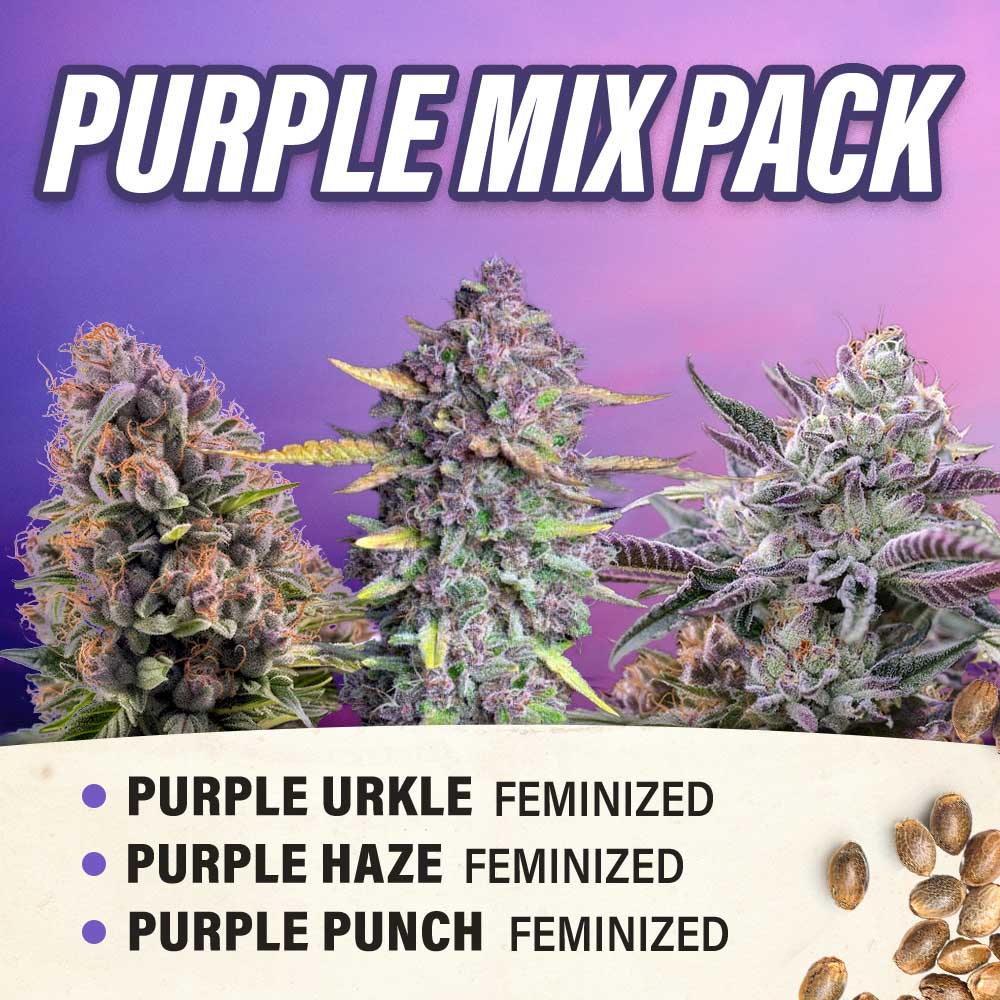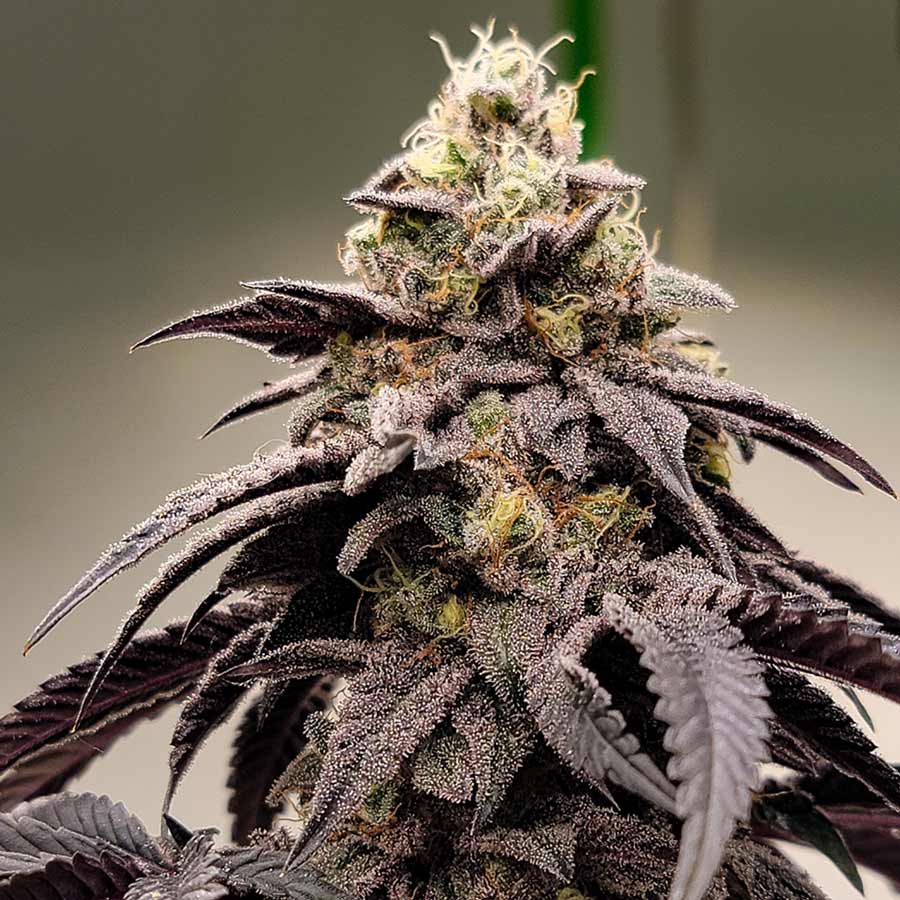Cannabis Trichomes: 4 Ways They Affect Cannabis Plants

Cannabis trichomes may be tiny, but they play a huge role in the life of cannabis plants. These sticky, crystal-like hairs don’t just give buds their frosty appearance—they’re also where cannabinoids, terpenes, and essential oils are produced.
For growers and consumers alike, understanding trichomes is the key to appreciating how cannabis develops its unique aroma, flavor, and potential therapeutic benefits.
Key Takeaways
- Trichomes are tiny resin glands that produce cannabinoids, terpenes, and essential oils.
- They protect cannabis plants from pests, herbivores, and harsh UV light.
- Different trichome types vary in size, shape, and contribution to potency.
- Growers monitor trichome color changes to time harvests for desired effects.
What are Cannabis Trichomes?

Cannabis trichomes are tiny, hair-like structures that cover the surface of cannabis plants, most noticeably on the flowers and sugar leaves. These specialized outgrowths function as the plant’s natural defense mechanism while also serving as the site where cannabinoids, terpenes, and other secondary metabolites are produced and stored.
In simple terms, trichomes are the small resin glands that give cannabis its potency, aroma, and sticky texture.
Different Trichome Types
Trichomes aren’t all the same—different types form across cannabis plants, each with unique shapes and functions. Understanding these variations helps explain how cannabis produces its rich mix of cannabinoids, terpenes, and other compounds.
- Bulbous trichomes – The smallest type, barely visible without magnification. They appear as tiny glands on the plant surface and play a modest role in producing cannabinoids and essential oils.
- Capitate sessile trichomes – Slightly larger, sitting directly on the surface without a stalk. They contain secretory cells that contribute to resin production, especially on leaves.
- Capitate stalked trichomes – The largest and most abundant type, easily visible as mushroom-shaped glands. Found mainly on cannabis flowers, they hold higher concentrations of cannabinoids and terpenes, making them vital for cannabis production.
-
Non-glandular trichomes – Fine outgrowths or tiny hairs that don’t produce cannabinoids but help protect cannabis plants from pests, UV radiation, and environmental stress.
How Do Trichomes Affect Cannabis Plants?
Trichomes may look like simple tiny hairs, but they play multiple vital roles in cannabis plants. From defense to development, they directly influence plant health and the quality of cannabis products.
1. Plant Defense
Trichomes serve as a natural defense mechanism by protecting cannabis plants against pests, herbivores, and harsh environmental factors. Their sticky texture and bitter taste deter insects and animals, while their ability to reflect UV light shields delicate plant cells from radiation damage.
2. Cannabinoid and Terpene Production
Within glandular trichomes, specialized secretory cells produce cannabinoids and terpenes—the compounds responsible for cannabis’s aroma, flavor, and potential therapeutic benefits. As the plant matures, these compounds accumulate in the trichome head, directly shaping the chemical profile of different cannabis cultivars.
3. Plant Development and Reproduction
Trichome development is closely tied to the plant’s reproductive organs, particularly cannabis flowers. More trichomes appear as the plant matures, especially on female plants, where they help protect and nurture the reproductive structures. This abundance of trichomes ensures higher concentrations of secondary metabolites, supporting both plant survival and cannabis production.
4. Response to Environmental Factors
Trichomes also react to stress and environmental factors such as UV radiation, temperature shifts, and physical damage. In many plant species, including cannabis sativa, this stress response can trigger more trichome formation, leading to higher concentrations of cannabinoids and terpenes. Growers often monitor trichome densities and color changes—like the amber hue that appears as plants age—to determine harvest timing and maximize quality.
Impact of Trichomes on Marijuana Use

Trichomes don’t just affect cannabis plants—they also shape how people experience marijuana. From potency to flavor, these tiny resin glands have a direct impact on the quality and effects of cannabis products.
- Potency and Effects – Since trichomes produce cannabinoids like THC and CBD, the number and type of trichomes present largely determine how strong and therapeutic a cannabis product will be.
- Aroma and Flavor – Terpenes stored in trichomes are responsible for the distinct smells and tastes of different cannabis cultivars, enhancing the sensory experience for users.
- Product Quality – Growers determine harvest times by watching trichome development. For example, a shift from clear to cloudy or amber trichomes signals peak potency and desired effects.
- Concentrates and Extracts – Cannabis products like oils, waxes, and hash rely heavily on abundant trichomes, since they contain the highest concentrations of cannabinoids and terpenes.
-
Therapeutic Benefits – The chemical constituents within trichomes, including cannabinoids and specialized metabolites, contribute to the potential medicinal uses of cannabis, from pain relief to stress management.
Final Thoughts
Trichomes may be tiny, but they’re at the heart of what makes cannabis unique—from protecting the plant to shaping its aroma, potency, and therapeutic benefits. For growers and consumers alike, paying attention to trichome development offers deeper insight into plant health and product quality.
If you’re curious to learn more about cannabis science and cultivation, you can start learning here.
Frequently Asked Questions
Do all cannabis plants produce the same amount of trichomes?
No, trichome production varies widely among cannabis cultivars and even between individual plants. Genetics play a major role, but environmental factors such as light exposure, temperature, and stress also influence how many trichomes form and how densely they cover the plant surface.
Can trichomes be seen without magnification?
Some trichomes, like capitate stalked trichomes, are large enough to be visible to the naked eye, giving cannabis flowers their frosty or sticky appearance. However, smaller types such as bulbous or sessile trichomes often require magnification tools like a jeweler’s loupe or microscope to be clearly observed.
Why do growers monitor trichome color?
As cannabis plants mature, trichome heads transition in color—from clear to cloudy and finally to an amber hue. This shift indicates changes in cannabinoid and terpene content. Growers use these color stages to determine the optimal harvest window, depending on whether they want higher concentrations of uplifting or relaxing effects.
Are trichomes unique to cannabis?
No, trichomes are found in many plant species. In general plant science, trichomes serve various roles, from plant defense to reducing water loss. Cannabis trichomes, however, are distinct because they produce specialized metabolites like cannabinoids and terpenes, which have significant effects on cannabis use and potential therapeutic benefits.
Do male plants have trichomes too?
Yes, male plants also develop trichomes, though typically in lower densities than female plants. Since female cannabis flowers are the main sites of abundant trichomes and cannabinoid production, they are preferred for cannabis cultivation and product development.



